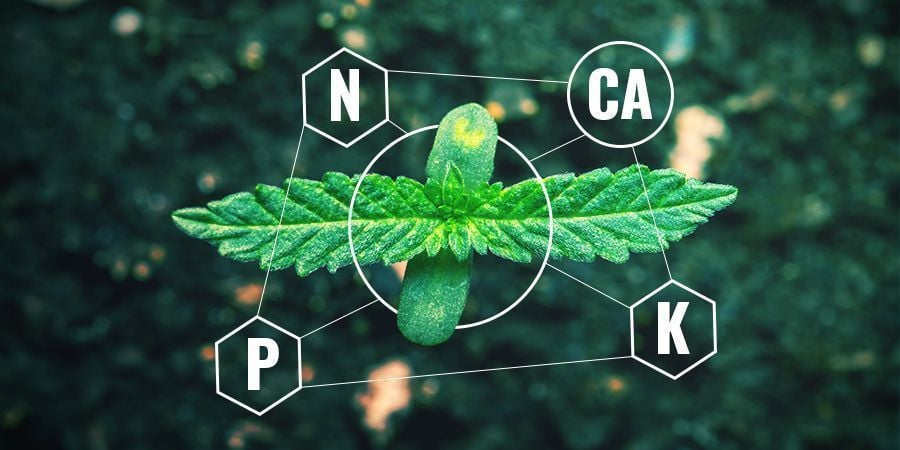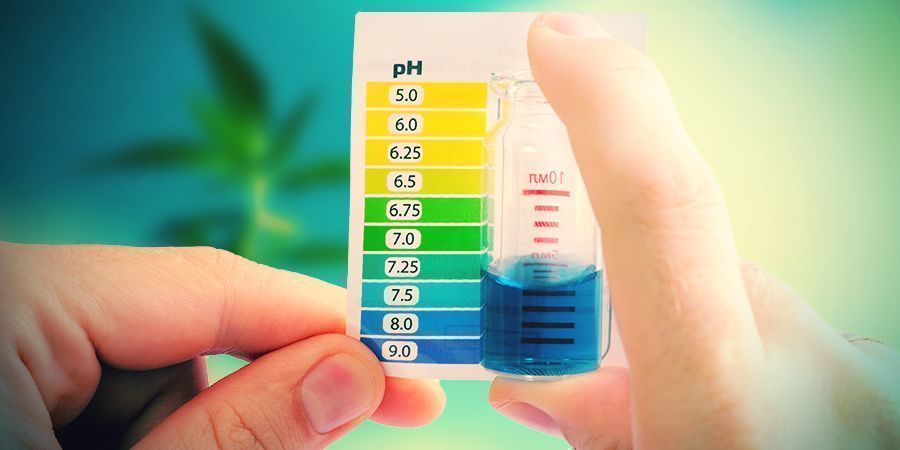Calcium And Cannabis Plants
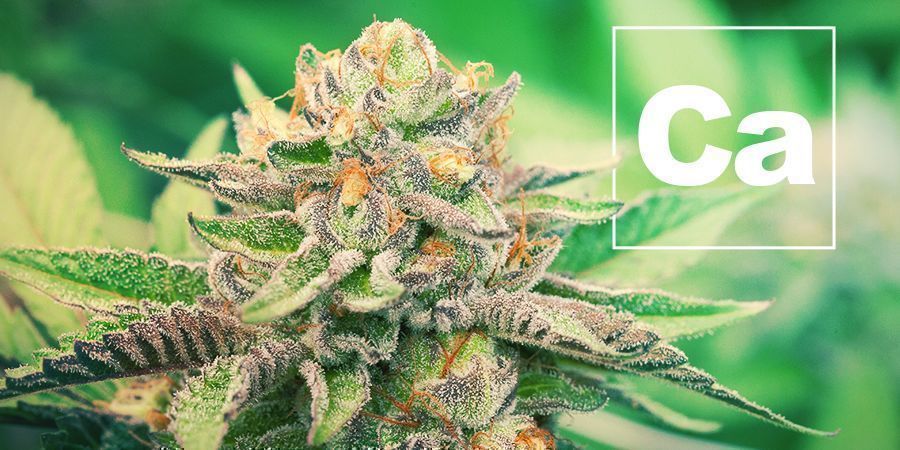
Calcium is one of the main nutrients that your cannabis needs for healthy growth. Since it plays a role in important biological functions, a calcium deficiency or excess when growing weed can cause all sorts of problems. As we go along, we'll teach you how to spot, solve, and prevent every calcium-related cannabis growing issue.
Cannabis plants need calcium for healthy growth. If calcium is not available in sufficient amounts or there is too much of it, your plants will get sick and your yields will suffer. We’re taking a look at the importance of calcium when growing cannabis and let you know how you can spot calcium deficiency or calcium toxicity along with how to treat and prevent it.
What Is Calcium?
In this context, calcium, along with magnesium and sulphur, is one of the essential secondary macronutrients for plants. They are classed as secondary because, while they’re needed in fairly large amounts, they’re not as necessary as primary macronutrients like nitrogen (N), phosphorus (P) and potassium (K).
Secondary nutrients, regardless, are almost as important for plant growth as the main N-P-K nutrients. They are needed so your plants can grow to their full potential, stay healthy throughout their life, and reward you with fantastic yields.
Cannabis incorporates calcium into the cells and cannot relocate it from older to newer tissue, as it can with some other nutrients like nitrogen. For that reason, calcium is classed an immobile nutrient, while nitrogen is a mobile nutrient. If the plant lacks an immobile nutrient such as calcium, problems will often first show on new growth, rather than on old tissue.
Why Do Cannabis Plants Need Calcium?
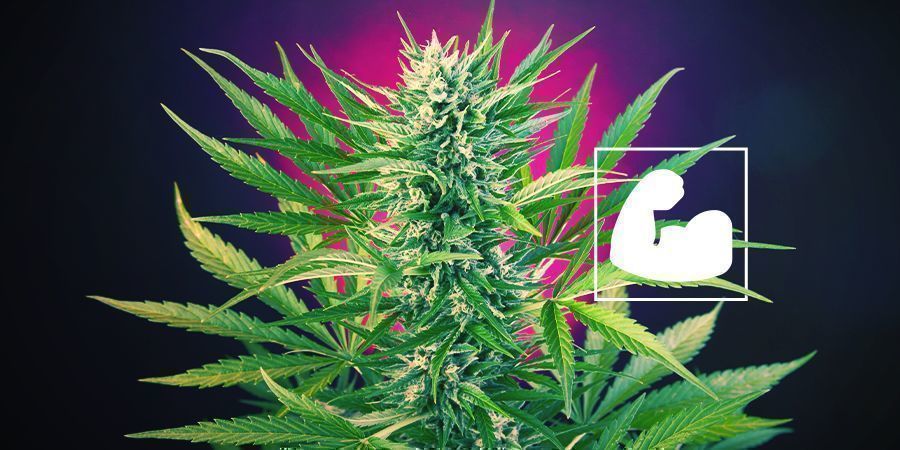
Calcium is needed by your plant in all growing phases although the amount varies depending on the growth phase it’s in. It is found abundantly embedded in the cells of the plant, where it serves a multitude of functions.
While the role of calcium in cannabis plant growth is fairly nuanced, it can be broken down into a few key contributions. In short, calcium:
-
Improves absorption and translocation of nutrients. Calcium is essential in allowing your cannabis plants to absorb other nutrients. This is why a calcium deficiency often also leads to other nutrient deficiencies.
-
Benefits cell membrane permeability. It keeps needed nutrients inside cells, and lets other nutrients move to other cells.
-
Strengthens plant tissue. Calcium strengthens the cell wall structure in all parts of the plant, including the stems, leaves and roots. This improves the robustness of plants and benefits their overall health.
-
Better resistance to pests and diseases. Stronger plant tissue means your plant is better able to resist pest infestations and diseases.
-
Protects your plants from heat stress. Calcium promotes respiration of plant tissue, and stimulates enzymes that protect your cannabis plants from abrupt temperature changes.
-
Nurtures the cells of your cannabis plant. Calcium regulates and controls hormone and enzyme activities, along with playing an important role in energy generation and gene expression.
Calcium Needs Per Cannabis Growth Stage
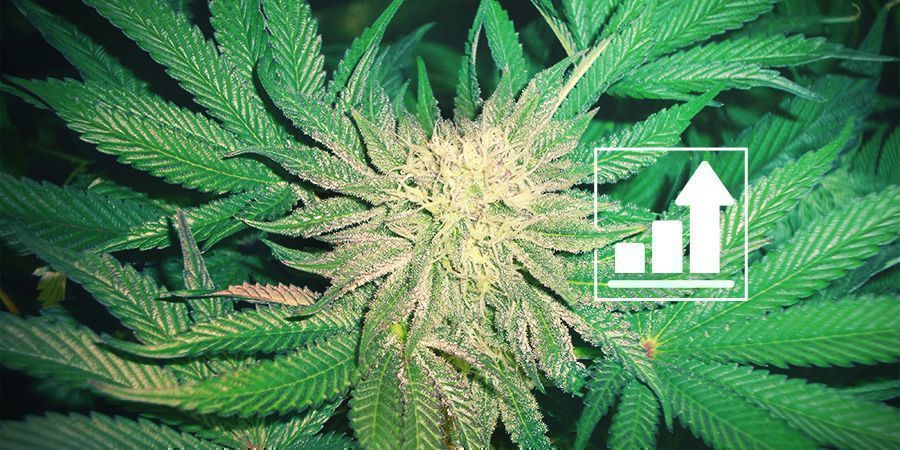
Early Stage
For seedlings and cuttings, it is best if you use minimal nutrition, if any. Start feeding gently at low nutrient doses (25% recommended dosage) only once your plant has reached 15cm.
Vegetative Phase
After week 4, when your cannabis plants have entered the vegetative phase, give them appropriate nutrients at the recommended dosage. Your plant will require a nitrogen-rich feed with moderate levels of calcium. Thankfully, most premade cannabis nutrient mixes incorporate secondary nutrients, including calcium, in their products.
Pre-Flowering
Your cannabis will grow vigorously during pre-flowering, and some plants may stretch considerably in a very short time. This is where your plants want extra calcium and magnesium; both will help them grow robust roots and heavy buds.
Flowering
Although your cannabis plant will require less calcium in the flowering phase, the element is still needed for healthy bud growth. A serious calcium deficiency during flowering can negatively affect bud growth and yields, so stick to the recommended dosage.
Calcium In Chemical Vs Organic Fertilizer
Whether you want to grow organically (with compost and “super-soils”), or stick to mineral nutrients, the choice comes down to your preferences and expectations. When it comes to calcium, you will have plenty of options either way.
When growing with mineral (ie. chemical) nutrients, any decent premade cannabis nutrient will contain calcium nitrate, calcium chloride or both. However, since calcium deficiencies are relatively common, even with high-quality nutrients, having some calcium additives on hand is recommended. With that in your arsenal, you can easily add calcium to your regimen. Alternatively, you could try calcium nitrate, a fertilizer with 20% calcium and 15% nitrogen.
When growing organically, there is no shortage of raw materials that you can add to your soil or water to provide calcium. Dolomite lime and gypsum are the usual choices, but you can also use eggshells, clamshells, oyster shells or wood ashes. All of these natural materials contain at least 30% calcium.
Grow Tips Concerning Calcium
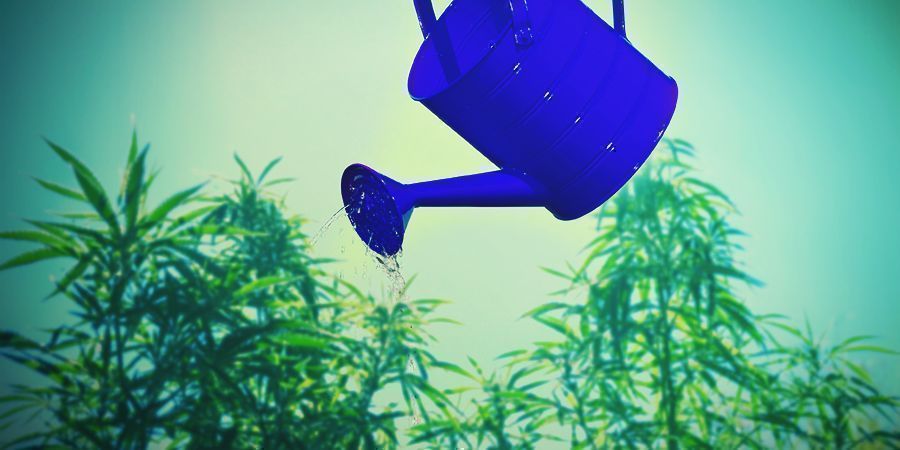
When growing in soil, shoot for a pH of 6.2-7.0 pH, and don’t let your water dip below 6.2 pH. When growing hydroponically, the optimal pH level for calcium intake is 6.2-6.5 pH. Below 6.2 pH, calcium will not be available to your plant, even if present, and deficiencies will occur.
When growing in coco, plants will have a higher calcium requirement than they would if you were growing in soil. In that case, you want to use special coco nutrients which contain more calcium. Alternatively, you can add calcium and magnesium additives to your feeding regimen.
To make water-soluble calcium that you can directly feed to your plants, you can extract calcium from eggshells. Crush eggshells and let them sit in vinegar for 7-10 days. Filter out the liquid, then dilute 1:500 or 1:1000 with water. Use it as a soil drench or foliar spray.
Calcium Deficiency
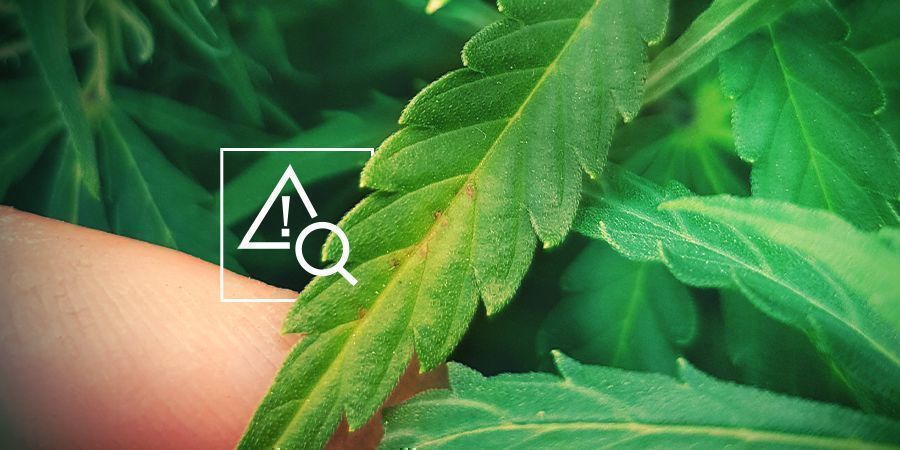
Oddly enough, even with calcium being in most cannabis nutrients, and calcium found in most tap water, calcium deficiencies aren’t uncommon. Hydroponic and coco grows can be especially prone to them, but they can also happen with soil grows. Some other factors, such as powerful LED lighting, are also said to increase the demand for calcium.
What Causes Calcium Deficiency?
So, you know the problems that come with calcium deficiency, but you may still wonder what can cause it. Here are a few reasons why it may occur:
-
Incorrect pH levels. If the growing medium is too acidic (below 6.2pH), calcium is “locked out,” and the plant can’t access it (even if it is present).
-
Growing in poor-quality soil that lacks calcium.
-
Growing in coco without coco nutrients that supply extra calcium.
-
Using reverse osmosis water. Some tap water has sufficient amounts of calcium so that a deficiency won't likely occur. Reverse osmosis water, however, requires a calcium/magnesium supplement.
-
Excessive levels of potassium in the soil.
How To Recognise Calcium Deficiency
As mentioned, calcium is an immobile nutrient, so symptoms will mainly show on new growth. On the other hand, since calcium is a critical nutrient, and a deficiency affects many important biological functions, it can mimic other deficiencies and result in varied growing problems. Here are some of the most common symptoms:
-
Mostly affects new growth at the top of the plant.
-
Young growth may curl, twist, and die off. Young shoots may turn yellow or purple.
-
You’ll notice overall slow and stunted growth, along with weak and sickly-appearing plants, when the roots have been compromised.
-
Large brown spots on leaves are a dead giveaway. The edges of leaves turn brown and crumble, then turn yellow at later stages.
-
Buds won’t grow big, and may look distorted.
-
Plants will have hollow stems and weak branches that easily break.
-
There’s an increased chance for root rot, and plants get more prone to diseases like fungal and bacterial infections.
How To Treat Calcium Deficiency
Noticing the signs is one thing, but tackling them is another. Here is how you can treat a calcium deficiency, depending on your growing method:
-
In Soil
First, ensure correct pH levels in your soil; your soil should be between 6.2 and 7.0. If pH is off, “flush” soil with pure pH water at the correct level. Then, provide nutrients at recommended dosage. If you want to quickly provide calcium to your plants, spray them with a calcium and magnesium supplement.
-
In Hydro and Coco
When growing in hydro, be sure to check your EC levels. If it’s below 0.3, add calcium and magnesium. In addition to that, check the pH level of your water/tank. If the pH is outside 6.2-6.5, flush your system with pH water, then provide nutrients at the proper levels. You can provide a quick emergency fix in the form of a foliar spray.
Calcium Toxicity
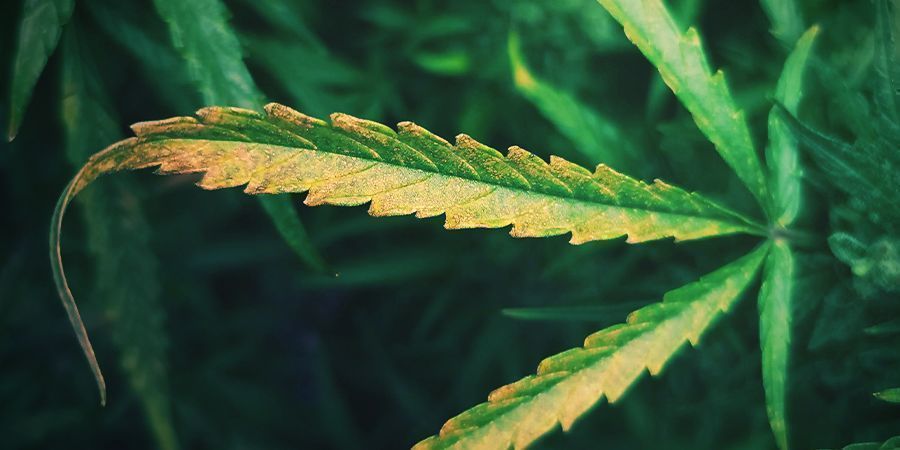
Although a calcium toxicity (excess calcium) is less likely to occur than a deficiency, it can happen. What makes it equally problematic, though, is the fact it can cause other nutrient lockouts and deficiencies. As a result, it’s not always easy to spot as such.
What Causes Calcium Toxicity?
While it’s not too easy to point out, we can break down the possible causes fairly easily. Calcium toxicity can occur for a variety of reasons, including:
-
Too much calcium in soil (DIY soil mix with too much lime, etc.)
-
Overfeeding (especially young plants and seedlings) with calcium additives too early or in the wrong dosage.
How To Recognise Calcium Toxicity
Now that you know the causes, you’re in a better position to recognize when it’s occurred. Here are the main signs of calcium toxicity:
Early Stage:
- Red and orange “rust” spots on leaves.
- Stunted growth.
- Drooping leaves.
- Presents as potassium, magnesium and iron deficiency (with related symptoms).
Late Stage:
- Entire leaves turn yellow and brown.
- Leaves dry out and crumble.
- Other general symptoms of nutrition sickness in plants.
How To Treat Calcium Toxicity
If you’ve discovered your cannabis plants are suffering from calcium toxicity, you won’t have much time to lose. Here’s how you can eliminate the problem as quickly as possible, whether you’re growing in water, coco, or soil.
-
In Soil
Flush your plants with pure water at the correct pH level (6.5-7.0) to remove excessive minerals. Then, allow the soil to dry out completely until the next watering. Afterwards, only give them pH water, and don’t feed them for one week. Allow the plant to "eat" the remaining calcium that is stored in its tissue. Afterwards, feed nutrients at recommended levels.
-
In Hydro and Coco
Flush medium with pH water and/or change water in your tank. Then, start feeding at half the normal EC.
How To Prevent Calcium Toxicity
-
Know your water quality.
Most tap water already contains calcium and magnesium, although this can vary. If you know those values (check your water supplier for this information), use that amount as your base EC value when feeding your plants. This will help keep your Ca/Mg amounts at the proper levels.
-
Measure your water pH every few months.
The pH of tap water isn’t always constant and can change, eg., in winter vs. summer. Knowing the exact pH of your water reduces the risk for nutrient lockout.














 United States
United States

